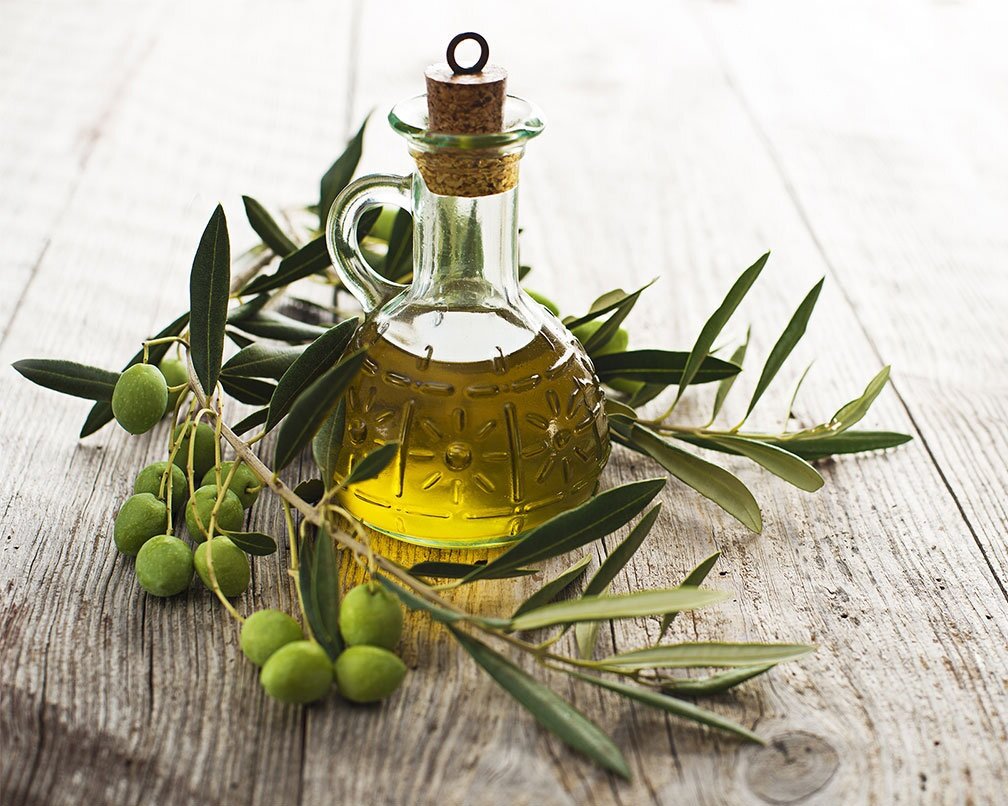9 facts about olive oil
9 facts about olive oil that may surprise you
The production of olive oil dates back to 3000 BC, and the most common was among the ancient Greeks, Romans and Phoenicians, who actively traded this product, transporting it in special clay amphoras. It should be noted that the ancient olive oil can be described as Extra virgin, since it was obtained by exclusively cold pressing.
Since ancient times, olive oil has been considered a gift from the gods, a medicine given to people by nature itself. And it is no coincidence that the inhabitants of the Mediterranean, who regularly consume olive oil, retain their youth, beauty and health for many years.
Olives, one of the oldest foods in the world, grew in Asia Minor, Iran, Syria, Palestine and the Mediterranean basin over 6,000 years ago. The olive tree has provided food, fuel, wood and medicine for many civilizations, and is regarded as a symbol of peace, wealth and wisdom.
Olive oil was popular in many religions and rituals: it was anointed for reign, it was used during funeral ceremonies, the prophet of Islam, Muhammad, advised his disciples to anoint their bodies with olive oil, and in the Christian religion, the tradition of anointing with oil at baptism is still preserved. contains olive oil, it is also part of the "world".
Olive oil: unique composition.
The main secret of olive oil is in its unique composition; it is a real storehouse of useful components that are absorbed by the human body by almost 100%.
Olive oil contains:
monounsaturated oleic acid Omega-9 (71.2%),
polyunsaturated linoleic acid Omega-6 (up to 10%).
Olive oil contains phytosterols, vitamins E, K, choline and betaine, as well as minerals: potassium, calcium, iron, sodium.
Calorie content
Caloric content per 100 g - 884 kcal.
Olive oil contains a large amount of antioxidants and vitamin E, which helps to assimilate vitamins A, K. The result of such a natural "chain reaction" is a general rejuvenation of the body, improving the condition of the skin, hair, nails.
2. Olive oil - benefits for the digestive system.
Olive oil is very beneficial for the digestive system. It improves the activity of the stomach, intestines, pancreas and liver, and promotes the healing of stomach and duodenal ulcers. Olive oil has a choleretic and mild laxative effect. This is a rare and valuable property, because other vegetable oils have no choleretic effect.
A dessert spoon of olive oil on an empty stomach in three months helps to cure stomach ulcers and gastritis, while a spoonful of sunflower oil in such a situation can provoke hepatic colic and exacerbation of gastrointestinal diseases.
3. Olive oil - good for the heart.
Olive oil is a natural remedy for the prevention of cardiovascular diseases, especially heart attacks and strokes, as well as cancer. The secret is in the content of a record amount of monounsaturated fatty acids Omega-3, which prevent atherosclerotic plaques from being deposited on the walls of blood vessels and even destroy those that are already there.
In addition, scientists have found that the oleic acid contained in olive oil stimulates a gene that suppresses the activity of cancer cells. Accordingly, the risk of developing cancer, in particular breast cancer in women, is reduced.
Train yourself to take two tablespoons of olive oil a day (salad dressing, add to soups, side dishes, marinades), and your heart will work like clockwork.
4. Olive oil - benefits for children.
Olive oil is especially beneficial for children and pregnant women, because the fatty acids contained in it are involved in the formation of the fetal brain, its bone and nervous systems.
Also, olive oil provides a gentle transfer of infants to adult food. The fact is that the fatty acids of extra virgin olive oil are very similar to the fats that are part of mother's milk: linoleic acid in both is about 8%. Olive oil should be added to cereals and mashed vegetable purees.
It is important to remember that a lack of linoleic acid in the body can cause a number of skin diseases.
5. Olive oil for frying.
Olive oil is one of the best oils for frying. it retains its structure at high temperatures and does not burn.
The smoke point of olive pomace oil (Pomace) is 238-242 degrees Celsius. This oil practically does not oxidize due to the low content of unsaturated fatty acids. Therefore, lovers of healthy food can safely use it to prepare all sorts of dishes - to warm up, fry, and at the same time enjoy a pleasant natural aroma, without which it is impossible to imagine healthy Mediterranean cuisine.
6. Olive oil in cosmetology.
Since ancient times, olive oil has been widely used in cosmetology. To preserve and maintain beauty and youth, women in Ancient Greece regularly used masks based on olive oil.
Olive oil nourishes and moisturizes dry skin, increases its firmness and elasticity. Helps relieve dry scalp, dandruff, itching, brittleness and hair loss. The oil can be used to massage the body and improve blood circulation. Olive oil contains oleic acid, which stimulates lipid metabolism in the skin and accelerates the breakdown of fats, so this oil is used for anti-cellulite massage. After sunburns, it is recommended to apply olive oil to the skin because this oil is UV resistant.
Today, cosmetics based on Extra Virgin olive oil are very popular. It is found in various creams, masks, shampoos, and soaps.
Apply oil to your hands and wear gloves before cleaning your home.
7. Olive oil must be unrefined.
Extra virgin olive oil must be unrefined. The process of refining (refining) vegetable oil consists of three main stages: neutralization, bleaching, deodorization. The result is a product without a pronounced taste, color and odor.
After opening a bottle of olive oil and not feeling the pronounced natural aroma of olives, think about the quality of the purchased oil. Unfortunately, the inexpensive olive oils from our supermarket shelves are often a mixture of refined and unrefined oils.
When choosing olive oil, it is important to remember that quality oil cannot be cheap. One of the reasons for this is the time it takes to harvest the olives. They are harvested in winter and usually by hand. One tree gives about 8 kg of olives, and 5 kg of olives are needed to produce 1 liter of oil.
8. What is the best olive oil?
The best olive oil is Extra Virgin. This is unrefined olive oil that has not undergone any thermal processing and therefore retained a maximum of useful substances. Basically, oil is filtered before bottling, but unfiltered oil is valued higher.
The main indicator of the quality of olive oil is its acidity. The acidity level is determined by the oleic acid content in 100 g of the product. The lower the natural acidity of the unrefined olive oil, the higher the quality.
High quality oil (Extra Virgin) should have an acidity of no more than 0.8%.
Oil with an acidity of less than 0.5% in the Mediterranean is considered to be medicinal.
9. Types and varieties of olive oil.
Olive oil is classified into:
Natural (Virgin olive oils) - oil produced without chemical purification, suitable for cold use (salad dressings, sauces);
Refined (Olive oil) - used in the production of physicochemical processes, ideal for frying and baking products;
Pomace (Olive-pomace oil) - oil made from pomace left after the first cold pressing, is rarely added to food.
There is olive oil that is not consumed in food - lampad oil, used as fuel for ceremonial lamps.
How to choose and how to store olive oil?
The healthiest olive oil is that which is cold pressed, with the inscription on the bottle Extra Virgin, in which the olives have not undergone any pre-processing. It is better to choose oil that was both produced and packaged in the same country. The quality of the oil depends on the place where the olives are grown, on the variety, and on the time of collection. The olive harvest takes place from November to December. If you squeeze oil from green olives harvested in November, the oil will have a tart taste. Closer to December, the olives are more ripe and contain more oil.
Look at the oil bottle in the light - there is usually sediment in the first cold pressed olive oil. Olive oil can vary in color from light yellow to dark green, depending on the time of collection, color and ripeness. If the color of the oil is brown or has a grayish tint, then most likely the oil is of poor quality. Quality olive oil is thick, viscous and very fragrant. The flavor of olive oil is determined by the type of olives and the time of collection. There are more than 360 varieties of olives. Olive oil can be both mild and bitter. The bitter taste of olive oil is considered a sign of a high quality product.
The healthiness of olive oil depends a lot on its acidity. The lower the acidity of the olive oil, the higher the quality and the softer and more pleasant taste. The highest quality oils have an acidity of 0.8%, but this figure is not always indicated on the bottle label.
Olive oil keeps well at room temperature, away from heat and direct sunlight. The refrigerator is not an enemy, but it is not an assistant either. But you can check the quality of the olive oil. High-quality extra virgin olive oil freezes after a few days of storage in the refrigerator at a temperature of 8-10 ° C. It becomes milky white, thick and does not flow out of the bottle. At room temperature, the oil thaws and turns back into a clear and liquid oil without loss of quality. If, after 1-2 days of storage in the refrigerator, the oil does not whiten completely or only individual white flakes are formed in it, then it is diluted or made from another cheaper oil with a flavoring "olive" additive.
Contraindications! Olive oil should be consumed in moderation as excessive consumption can negatively affect the stomach. It cannot be used for diseases of the gallbladder and biliary tract, since due to its strong choleretic effect, it can exacerbate the disease.


















